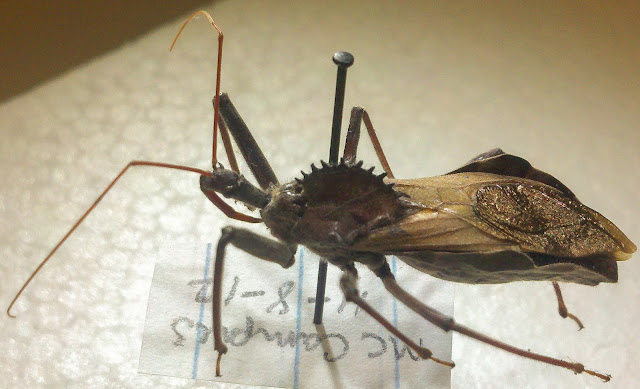Then I went outside to retrieve the mail today. I spotted something moving on the porch and took a closer look: it was a centipede! I ran inside to retrieve a vial, almost falling in the hallway due to my wet shoes (it rained today) and frightening the cat, which ran into the living room. I apologized and ran back outside, just in time to catch the critter before it left the porch and disappeared into the yard.
I took it back inside and examined it: it was one of the largest centipedes we have in Ohio, Scolopocryptops sexspinosus. It's in the family Scolopocryptopidae and only has 23 legs--not 100 (no centipede has 100 legs, despite the common name for the group). Normally this centipede is found under logs or rocks, so I was surprised to see it crawling around. Perhaps the soggy ground sent it searching for a drier place?
This centipede is a whopping 2.5 inches long, which is intimidating the first time you see it. It does have venomous fangs (which are actually modified legs!), so be wary of picking it up. Its bite isn't life threatening, but it probably won't feel very nice either. There is a similar species, S. nigridius, that occurs in the eastern US, but it's less common than S. sexspinosus. S. nigridius is reported to be darker with a bluish hue, though I've yet to find a specimen myself.
This individual is currently settling into its new home--one of my insect cages. I'll nab a few more photos and then decide what to do with it afterward. One of the things I've noticed while keeping it is its response to light. It has ocelli (small eyes that detect light and dark) on the sides of its head, and whenever it senses light, it scampers away and tries to burrow under anything nearby. This reveals another of its traits: speed. This species (like most centipedes) is fast. It's like a cheetah with a lot of legs.
So how do you know when you have this species? If you're in the eastern US, your centipede has 23 legs (putting it in the family Scolopocryptopidae), is bright orange and usually 2 or 3 inches in length, then you've got yourself a Scolopocryptops sexspinosus.



